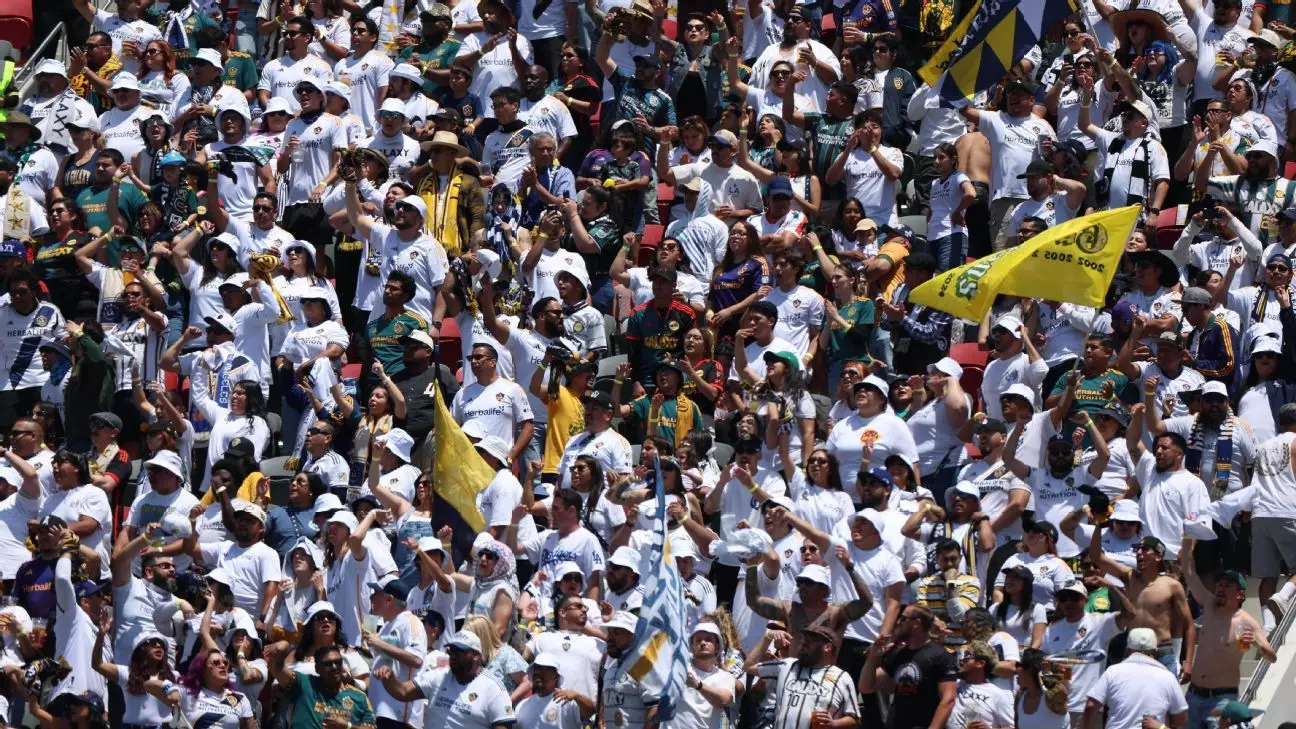Recent events following the match between LA Galaxy and San Diego FC have brought significant attention to the darker side of football culture: spectator violence. On that fateful Saturday afternoon at Snapdragon Stadium, what should have been a celebration of sport instead devolved into chaos as supporters clashed in the stands. The shocking scenes, captured on video, spilled into the parking lot, igniting a discussion on the responsibilities of clubs and fans alike. This behavior not only tarnishes the image of the game but also puts the safety of all attendees in jeopardy.
The Joint Response from Two Clubs
In the wake of these incidents, both San Diego FC and LA Galaxy swiftly condemned the violence in a joint statement, emphasizing their commitment to fostering a safe environment for fans. Their unified stance showcases the sporting community’s aspiration to transcend episodes of aggression. “There is no room for violence in our sport,” the clubs proclaimed, as they called upon supporters to honor the game with passion but also with respect. Their clear message acts as a beacon, reminding fans of the core values that should govern the sporting experience: safety, enjoyment, and camaraderie.
While it’s commendable that the clubs took immediate action to address the situation, it raises questions about the adequacy of measures in place to prevent such violence. With moments of instability documented in previous matches—including a prior altercation during a game against LAFC—it’s evident that a pattern may be emerging, necessitating a more rigorous approach to fan management.
The Broader Implications for Soccer Culture
As the soccer scene continues to grow in Southern California, particularly with the emergence of clubs like San Diego FC, the responsibility to nurture a positive environment becomes even more crucial. This evolving soccer culture reflects the passionate dedication of local communities but must also contend with the potential for unrest among rival supporters. As we see football increasingly drawing larger audiences, both in person and online, the stakes for safety grow ever higher.
The collective efforts from both clubs, in conjunction with local law enforcement and Major League Soccer, point towards an important realization: spectator behavior must be continuously monitored and managed. Ensuring compliance with the MLS Fan Code of Conduct is a crucial step, but it requires ongoing vigilance and commitment from every stakeholder involved.
A Call for Individual Responsibility
Beyond institutional efforts, fans also bear a significant responsibility for cultivating a welcoming atmosphere. It is imperative for supporters to reflect on their actions and recognize that sporting events should unite rather than divide. Positive, passionate support is what makes the game vibrant, and this can only be maintained when violence is unequivocally discouraged.
Engagement with local communities, educational programs, and initiatives that promote harmony between rival fans can serve as valuable tools in combatting this unsettling trend. It’s about fostering a culture that values human connection over hostility, ensuring that everyone can enjoy the beautiful game without fear. The true spirit of soccer deserves nothing less.

